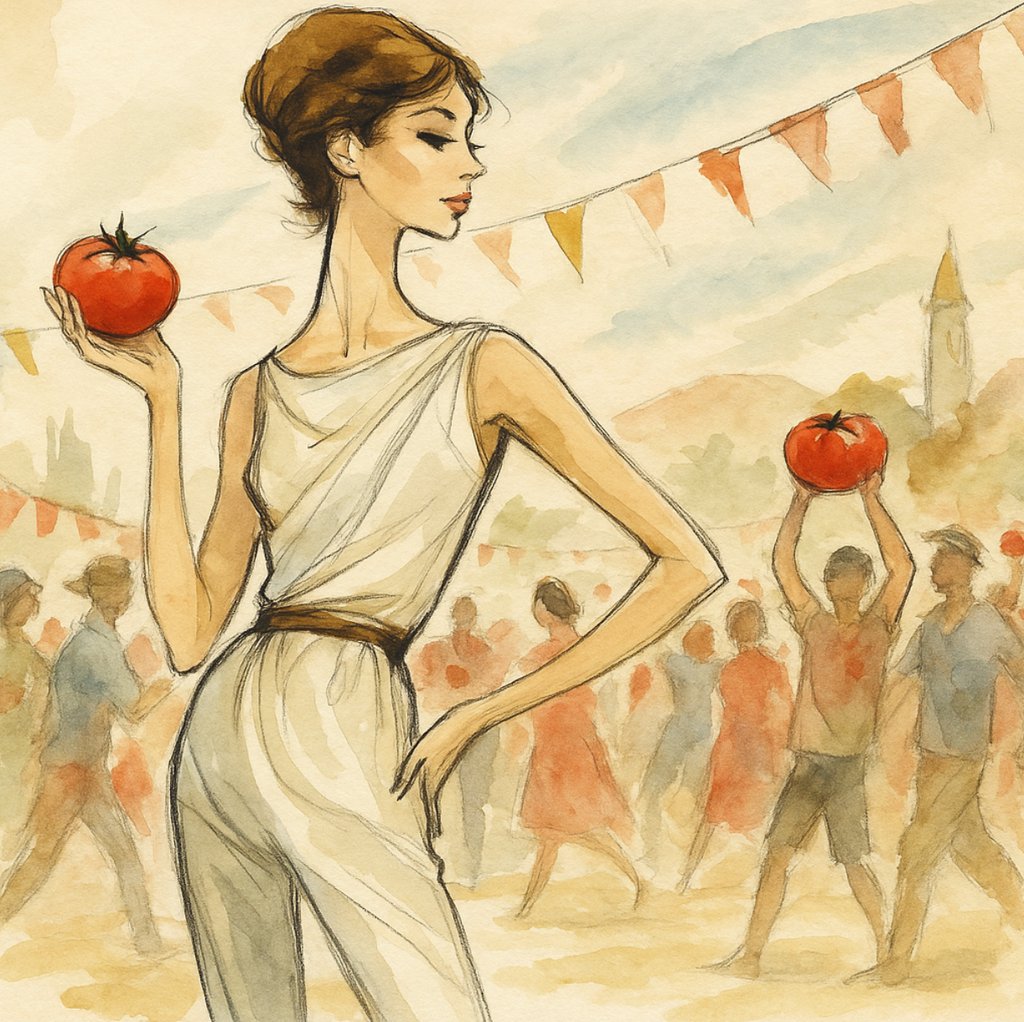The Cult of the Summer Tomato: From Mediterranean Kitchens to Spain’s Wildest Festival
From Spain’s chaotic La Tomatina festival to Italy’s passata rituals, the summer tomato is more than food—it’s a seasonal symbol of joy, tradition, and abundance.
FOOD HISTORY & TRADITIONS


Few foods capture the feeling of summer quite like the tomato. Ripened under the sun, bursting with sweetness, and perfumed with the scent of warm soil, the tomato is more than just a seasonal fruit—it’s a symbol of abundance, pleasure, and celebration. Across the world, the arrival of peak tomato season is marked not just in kitchens but in festivals, rituals, and even chaotic public food fights.
One of the most famous examples? La Tomatina, Spain’s legendary tomato-throwing festival. But the cult of the summer tomato extends far beyond Buñol’s red-streaked streets, rooted in centuries of Mediterranean tradition and the human urge to savour—and celebrate—summer’s fleeting bounty.
La Tomatina: When Tomatoes Turn into Ammunition
Each August, in the town of Buñol near Valencia, tens of thousands of locals and visitors gather for the world’s largest food fight. During La Tomatina, more than 100 metric tons of overripe tomatoes are hurled through the streets, coating the town (and everyone in it) in red pulp.
The festival’s origins trace back to 1945, when a playful scuffle during a parade led to a spontaneous tomato fight. The tradition stuck, eventually becoming an organised (and now highly regulated) event that draws crowds from around the world. While the spectacle is undeniably chaotic, it’s also a celebration of joy, camaraderie, and the sheer excess of summer.
Importantly, the tomatoes used aren’t taken from anyone’s dinner table—they’re grown specifically for the event, too soft and low-quality for eating but perfect for flinging without causing injury. For Buñol, the festival isn’t just fun—it’s a celebration of the region’s agricultural heritage and a quirky ode to one of Spain’s most iconic ingredients.
Beyond the Chaos: Mediterranean Tomato Traditions
While La Tomatina grabs headlines, the tomato’s summer cult is most deeply felt in kitchens and courtyards across the Mediterranean. In Italy, August is the season of pomodoro preservation, when families gather to turn crates of ripe tomatoes into passata—slow-cooked, sieved purée stored in bottles to sustain kitchens through the winter.
This annual ritual is as much about community as cuisine. Relatives and neighbours gather, boiling, straining, and bottling under the sun, turning the fleeting summer harvest into something that lasts. The scent of simmering tomatoes fills courtyards, and at the end of the day, families toast with wine over plates of pasta topped with the first taste of their freshly made sauce.
Similar traditions exist across Greece, southern France, and Turkey, where tomatoes become sauces, spreads, or sun-dried preserves. These practices, rooted in necessity, have evolved into celebrations of continuity, connecting generations to both the land and each other.
Why the Tomato Became Summer’s Emblem
Part of the tomato’s cult status comes from its seasonality. While modern supermarkets stock tomatoes year-round, those pale, watery impostors can’t compete with the flavour of a sun-ripened August fruit. For centuries, the arrival of ripe tomatoes marked the peak of the growing season, a sensory reminder that summer’s bounty was at its height—and wouldn’t last forever.
The tomato also represents versatility and transformation. It can be delicate and raw, as in a caprese salad, or rich and cooked, as in a hearty ragù. It straddles the line between fruit and vegetable in the culinary imagination, finding its way into everything from chilled soups like gazpacho to festival chaos in Buñol.
In many cultures, the tomato has even become a symbol of fertility and vitality, its red hue linked to energy, love, and life itself. In festivals like La Tomatina, this symbolism is turned playful, transforming a fruit associated with nourishment into one of pure spectacle and shared delight.
Fun Fact: Painting the Streets Red
During La Tomatina, the entire town of Buñol turns red, but not for long. Within hours of the tomato fight’s end, fire trucks and volunteers wash down the streets, leaving little trace of the chaos. Thanks to the acidity of the tomatoes, the town is said to sparkle cleaner than before the festival—proving that, in a way, the tomato even helps tidy up after its own revelry.
The Tomato as Ritual, Not Just Ingredient
From Spanish festivals to Italian kitchens, the cult of the summer tomato underscores a simple truth: food is rarely just food. It’s a marker of seasonality, a reason to gather, and sometimes, an excuse to break free from routine and embrace joy.
La Tomatina may be the loudest expression of that joy, but the quieter rituals—the bottling of passata, the first slice of a garden-grown tomato sprinkled with salt—are just as much a part of the cult. Together, they show how one humble fruit can embody both the intimate and the spectacular sides of human celebration.
The next time you bite into a sun-warmed tomato or stir a simmering pot of sauce, remember: you’re participating in a tradition as old as the first Mediterranean harvests, one that spans continents, from peaceful courtyards to streets awash in pulp.
